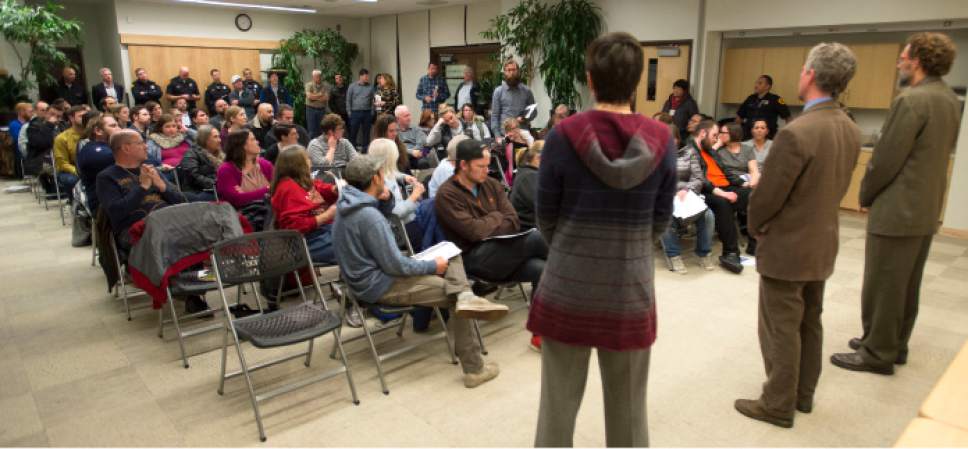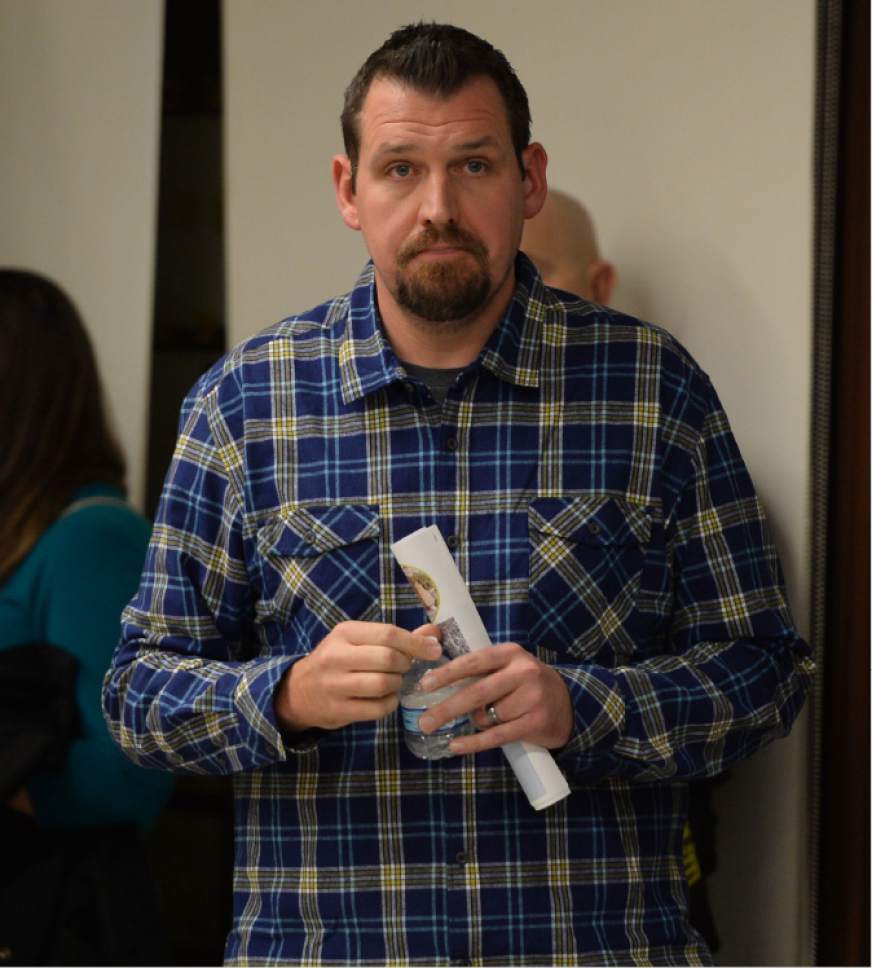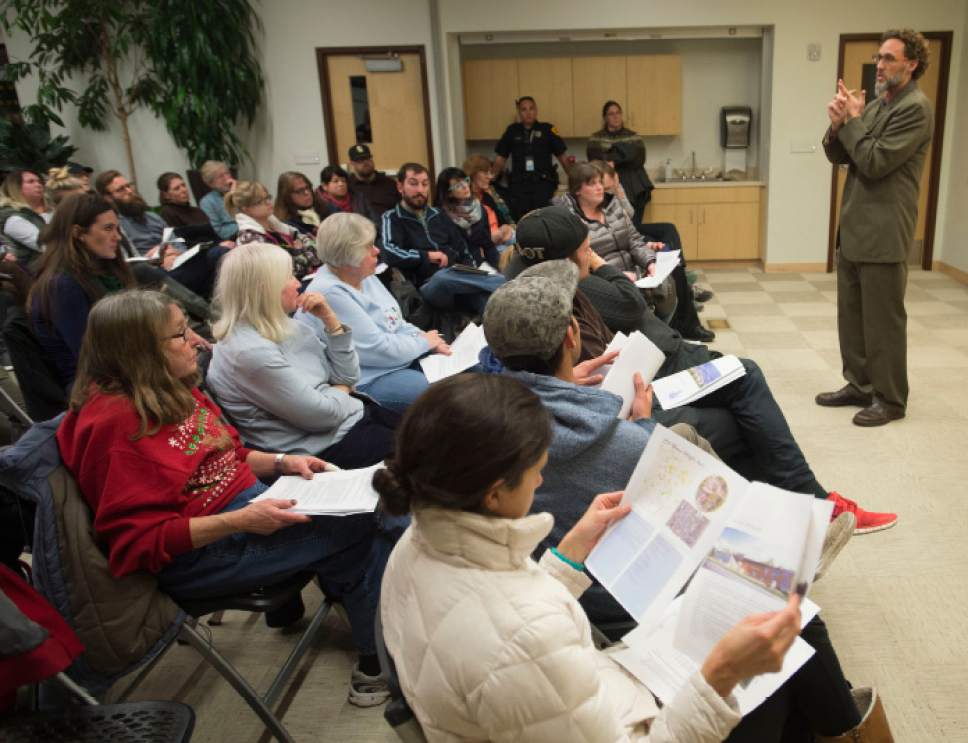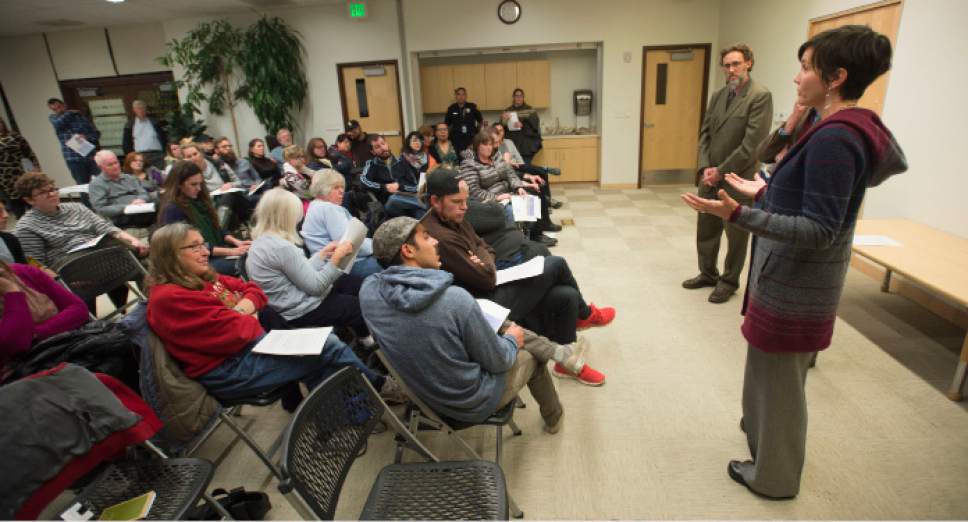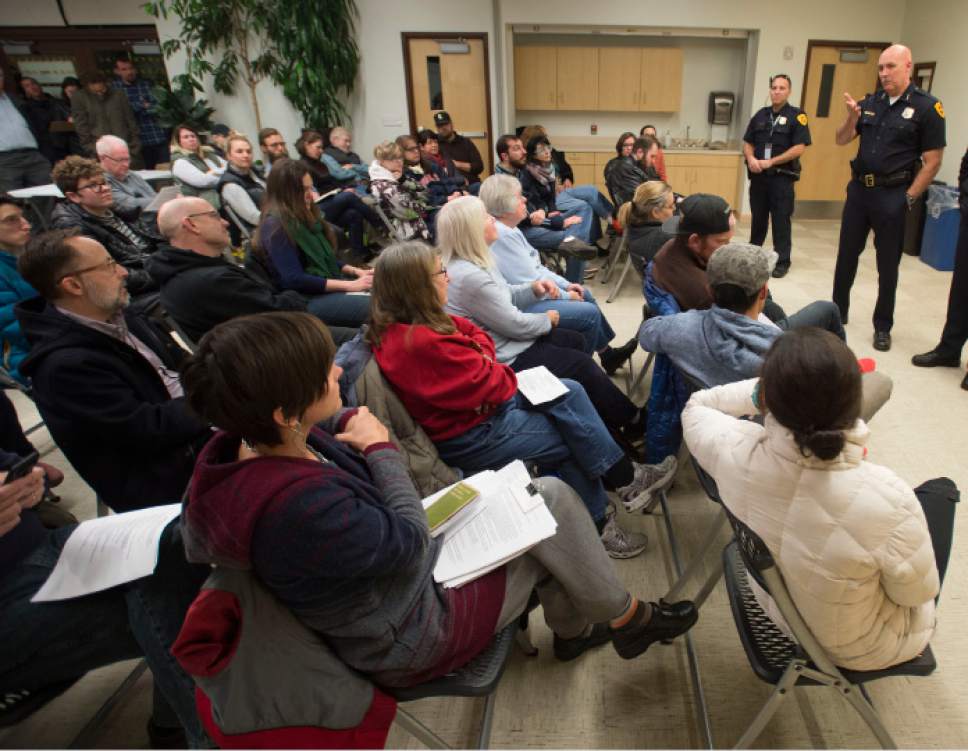This is an archived article that was published on sltrib.com in 2016, and information in the article may be outdated. It is provided only for personal research purposes and may not be reprinted.
When Salt Lake City finishes the four new homeless shelter sites announced Tuesday, Pam Moritz will live within 2 miles of three of them.
Moritz describes it as a geometric nightmare, positioning her house in the middle of an unfortunate triangle. And she sees just one way out: "I want to sell now and get out before my property values go down more."
Though her neighborhood in the Liberty Wells area hasn't always been an idyllic setting — nearby alleyways are sometimes filled with skulking figures, soiled mattresses and dirty needles — it will be hard for Moritz to leave.
She's lived in the little brown-brick house since December 1983. Solar panels and a basement came with time to make her "cute little bungalow" feel more like home. Now, she says, the city is ambushing the "low-income area" with its plans to move homeless services there, disproportionately placing more shelters near the neighborhood than elsewhere.
Along with about 70 other homeowners, Moritz expressed those concerns at a tense community meeting Wednesday night — the first public gathering to include a City Council member since Tuesday's announcement.
Mayor Jackie Biskupski was scheduled to attend the meeting, but she was tending to a family emergency in another state, according to her office.
The group filled the small room at Tracy Aviary in Liberty Park with many residents standing at the back, next to a group of police officers.
Several upset by the shelter locations yelled over the speakers who explained the site-selection process. One man threw his arms toward the front of the room and screamed, "This is chicken what you're doing to us." Another man promised to "fight back."
The three city officials in slacks and blazers — Councilwoman Erin Mendenhall and Biskupski's representatives, Patrick Leary and David Litvack — appeared at odds with the attendees who primarily wore leather work boots, overalls, baseball caps and thick winter coats.
Despite concern for property values and safety, each person who spoke also expressed feeling disenfranchised during the process of choosing the shelter locations. City officials selected the sites "behind closed doors," Litvack said, because they feared knee-jerk reactions from residents.
Mendenhall, who called the meeting "one of the most difficult" she's led on the job, said a decision on the sites may never have been reached had it been opened for public comment.
"There is no perfect site," she said. "There is no neighborhood in this city that's going to say, 'Yes, let's put it here.' "
Though specific designations for each facility have yet to be determined, Mendenhall said one of the Liberty Wells properties, located at 653 E. Simpson Ave. (2300 South), likely will be reserved for single women or single parents with children, to "reduce impacts" on the neighborhood.
A second location nearby, 275 W. High Ave. (1400 South), is in talks to be a single-women or single-men facility because it has one entrance, making it easy to monitor comings and goings, Mendenhall said.
When the new sites open in 2018, Salt Lake City police will redistribute to those areas 70 officers who regularly patrol the Rio Grande District that surrounds the Road Home homeless shelter, pledged Chief Mike Brown. The Road Home will shut down after more than 30 years of service, plagued in recent months by stabbings, assaults on police officers, drug deals and burglaries.
One of the four shelters will remain nearby, at 648 W. 100 South.
"As we move the homeless out of there," Brown said, "the criminals will be exposed."
Patrick Pennington, 48, fears that those criminals will just move into the neighborhoods surrounding the new shelters, especially because of the proximity of the three in the Liberty Wells area — opening new trafficking routes for drugs. He believes the city is "ruining the corridor" where he's lived for the past six years.
"I have every penny of my life in your city," he shouted from the back of the room. "You gave us no choice."
Some residents called on the city to offer buyouts for property owners in the vicinity so they can move away from the incoming shelters, which they compared to the relocation of the state prison.
Bracing for the worst and doubting any viability that suggestion, Moritz and her husband, Steve Moritz, have tracked the exact distance from the couple's home to the sites: 1.5 miles to the 275 West space, half a mile to the 653 East property and 10 blocks to the site at 131 E. 700 South.
"There's always been crime here," Steve Moritz said, "but it's going to get worse."
Twitter: @CourtneyLTanner


